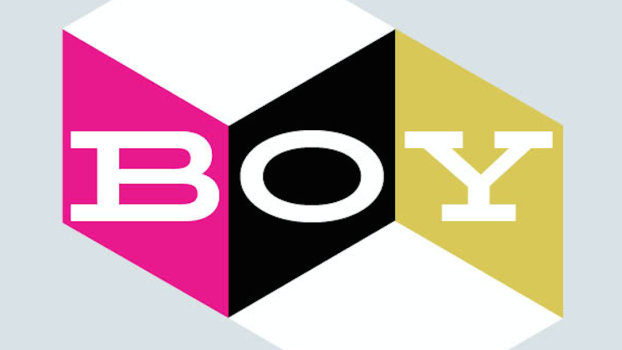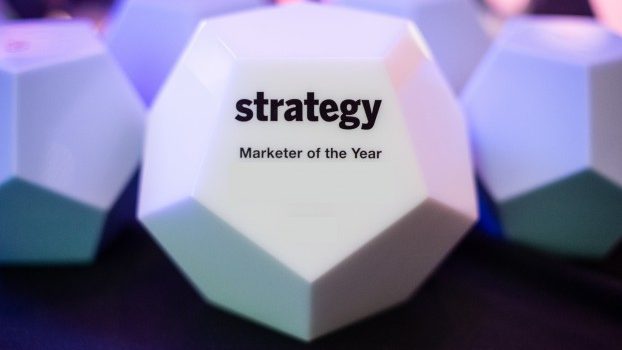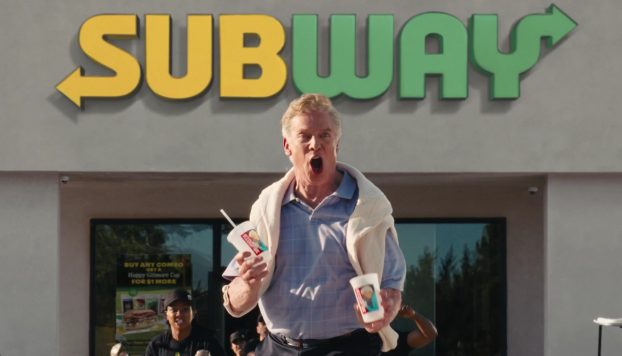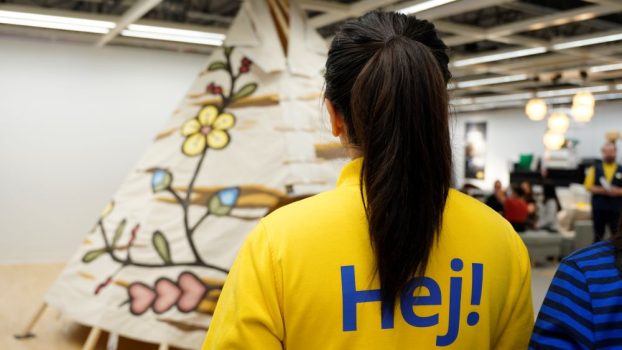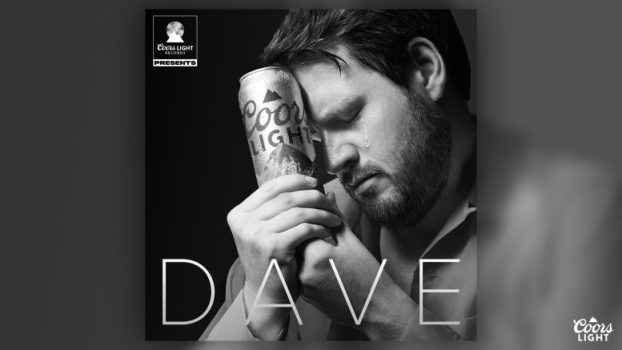
Mark Nasr, the new EVP of marketing and digital at Air Canada is an S-O-B. The son of a banker, that is. Had he followed in his father’s steps and gone into banking, it would have made sense. But the hospitality and aviation fanatic was pulled into the travel sector as an almost-teenager.
“I traveled a lot when I was very young. Then there came a point in time when my parents were successful enough to travel business class, but they put us, the children, in coach,” Nasr tells strategy. “When I was 12, or 13, I really wanted to sit in business class but there was no way my parents were ever going to spend that amount of money for me to do that as a kid. So I started researching frequent flyer programs and I became obsessed with travel programs. The next year, when we embarked on our family trip, I had upgraded myself to business class without my parents knowing by using my points.”
The global citizen – he’s originally Palestinian Lebanese, was born in the U.S. and lived and worked across Latin America, Canada and the U.S. – has worked in the business since he joined Continental Airlines in 2006. And while Nasr has been at Air Canada since 2016, this spring he was promoted to his current role leading the airline’s marketing and digital arms, as well as serving as president of Aeroplan.
You’ve been at Air Canada for over seven years, but what has it been like for you since taking on the EVP of marketing and digital role?
I’ve been in travel and hospitality for about 20 years; I moved to Canada to take the position, which ultimately led to the role that I have the opportunity to serve in today. It’s been very interesting. I have what I would describe as a non-traditional but emerging CMO role. I have, largely speaking, three sets of responsibilities here: number one, the marketing and products services, which you can think of as the customer value proposition; number two, the loyalty program Aeroplan, which is itself a standalone business but that helps to promote Air Canada as an airline. And then finally, I’m responsible for our global IT team – all the facets of IT, data and digital.
In your marketing role at Air Canada, what do you view as the opportunities and challenges ahead?
Air Canada is a great brand. It’s very well-known, and it’s very well-respected. But what’s interesting is that we operate in a challenging environment. And the level of service that we provide to our customers and our reliability doesn’t consistently match up to what we aspire to. And I think – partly because we are respected and partly because we have the privilege of flying the maple leaf on our tail – expectations are very high from our Canadian consumers.
Travel is emotional to begin with, in all the best ways. We want it to be emotional, that’s part of what allows us to be a successful business and have a successful loyalty program: that connection. But it also means that when things go wrong the stakes are very, very high. Ultimately, I see being able to live up to what Canadians expect of us in terms of consistency and reliability in the service that we deliver as an opportunity. If we can take Air Canada from a company that meets expectations most of the time to a company that meets expectations almost all of the time, or exceeds expectations, then we can go from being not just a respected brand but a truly loved brand. That’s where the opportunity lies. We care a lot, and we try very hard. But we can do more, and we can do better. Over the course of the next two years, we’re going to take this imperative for elevating the customer experience and we’re going to make it so that we’re at a higher level of operational performance and delivery.
With regards to the negative coverage or feedback airlines in general get – whether justified or not – how do you work to address those?
We’re playing three-dimensional chess in a fishbowl in full view of the public. That is the reality of our business. Another reality is that we are very interconnected with other necessary functions that we don’t control, like airport infrastructure, air traffic control, government security. Geopolitical restrictions that suddenly make a nonstop flight to Hong Kong impossible, for example. There’s that element. And it is a very, very public business that we’re engaged in. But that’s just the reality.
Ultimately, what we need to do, first, is structure schedules and make service promises that we think delivering on is very highly likely. Number two, do everything possible to work with players in the ecosystem that we don’t control to try and make it so that it doesn’t become the customer’s problem. And in the last year or 18 months, we’ve done more speaking with and working with airports, air traffic control providers, different federal regulators than we’ve ever done in our history to align information, come up with the times together, better communicate, control, mitigate, etc. And number three is that things will always go wrong in this business. You might remember the freak snowstorm in Vancouver during Christmas last year? Fortunately, we were the least affected of the major Canadian airlines but we were still affected. These things will always happen. We need to be as good as we possibly can be at recovering from irregularities and disruptions. That means a duty of care obligations. That means in the way we handle compensation requests, for example. And more than anything else, it means meeting our customers with visibility into what’s going on.
How do you reach the Air Canada customer in terms of advertising?
If you look at everyone in Canada, 60% fly about once a year or more. Our focus is on that 60%. The entire focus of the company is on people who like to travel or need to travel. Within that we have frequent fliers and infrequent fliers. If you look at that 60%, 7% of them are flying four times a year or more, and 93% of them are flying one to three times a year or, typically, once or twice a year. Within that, we have three major kinds of customers: those traveling for business reasons, customers traveling for leisure, and customers traveling to visit friends and relatives. We examine and build our propositions a bit more around trip type than we do around individuals.
We’ve always been very successful with business travel; memberships, perks, lounges, flexibility, if your meeting ends early or lasts long, etc. Over the last three years, we’ve decided to strengthen our leisure travel and visiting friends and family travel. The leisure travel strategy is really oriented around families – making the process of buying tickets and flying together easier. For example, free family seating. If you book a ticket, within an hour, our automation will go in and give you free seat assignments together so that you know you’re not separated.
For visiting friends and relatives travel, it’s about where we fly. We’ve opened several destinations to allow for nonstop connectivity because the thing that makes flying the easiest is being able to get somewhere nonstop and avoid connections. Morocco, Egypt, India and Thailand, for example. And what goes along with that is speaking to those local communities, as in marketing which is culturally aware. Folks in the western side of Toronto that are Portuguese-speaking book travel differently and with different agencies than folks in Montreal that are oriented towards visiting friends and relatives in Southern France, let’s say. So even the travel agencies we do business with are different – how we build our product, how we reach out to them or how we structure incentive programs is usually different.
In order to put together a good market strategy, it’s about very thoughtfully looking at these new customer segments that we want to appeal to and asking, how do we communicate with them, and where and how do we sell the tickets and promote our offering?
How does your ethnic heritage or international view inform your work?
There are many, many things that make us similar as humans. Consistency in terms of how people want to be treated or that families are important in travel. Those are true of any culture. Then there are other things which are very, very different and knowing these things is important – having some idea when we really need to have a different offering or a different way of speaking or a different way of managing our employees around the world. I am incredibly proud of the diversity we have on my team. We’ve got at least four different religions, for example, that can represent a point of view that informs the way we make certain decisions. There are even differences in forms of payment. The way you pay for something is very different from one country to the next. In Brazil, you use a credit card but you have non-interest bearing instalment payments. In Switzerland and Germany, you almost always use a debit card because debt is seen as a sin, you just don’t go into debt. Even something as simple as the way we pay for Air Canada ticket is totally different. And it’s really important to know that.


